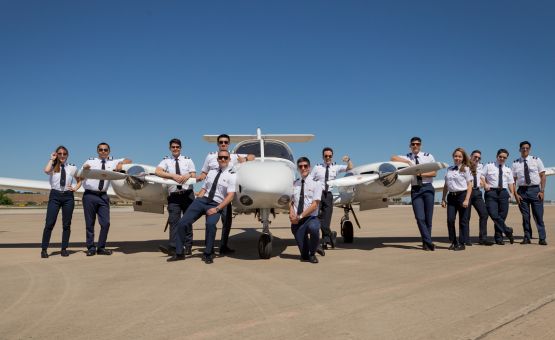By Tim Genc
Someone asked me, “How can I get the most out of my 141 flight program?” My initial response was, “Do you know what the difference between 141 and 61 is?” And before they could answer, I proclaimed, “It’s 80.” (Think about it… a difference is a mathematical term for subtraction…there you go.)
Part 141, FAA-Approved training programs require the use of a training syllabus, usually imply an organized curriculum and their schools, some for a flight instructor renewal course, are subject to significant FAA oversight; all in all the proper implementation of each of these features by your school will provide educational benefits to you, the student.
That being said, the features associated with 141 schools,and 61 schools for that matter, are merely tools used by flight schools to teach you how to fly. They are flight school administrative tools, not student-use or teaching tools. A 141 syllabus is like the time-tested checklist that the top orthopedic surgeon in the country is going to use on your surgery: YOU still are responsible for doing the physical therapy, regardless of their checklist. And that’s why, when a student asks me the difference between 141 and 61, my answer is always 80. (141-61=80)
From a student’s perspective, there are certainly benefits of 141 training, as well as 141 schools, but your actions as a student are no different; YOU still need to do the work to get the value out of your education. Understanding that you, the student, are still the deciding factor in your flight training success will assist you in getting the most out of your Part 141 flight training experience.
First and foremost, don’t overestimate or stress about the fact that there is a set and defined curriculum. So many people fret and place so much emphasis on that 141 syllabus or training course outline (TCO). This is a legend for your program; it’s not a map and it’s not your bible. This is like a grocery list that tells your school what needs to be accomplished. Similar to a grocery list (if you’re like my wife) it is written in an order that makes sense, but that order is usually not rigid. It is flexible and can be woven in and out of, if that’s what makes sense. The syllabus IS NOT your flight program, and it really isn’t meant for your review. It’s an after-landing or emergency checklist; you aren’t going to fly the airplane by your checklist, right? You’re going to fly the plane, and reference the checklist to make sure you included what was needed. Well, part 141 schools use the TCO the same way. It’s not there for you to study, and it’s not there to tell you everything that you need to do – that’s what your CFI is there for. Don’t place emphasis on your TCO, place emphasis on your program, your learning and your studying and nightly reading assignments, as recommended by your CFI.
That segways nicely into the next area where you can make a difference: being prepared. An organized FAA-Approved program is great, but an organized student is even better! You should always be prepared for your next lesson, but you should also be prepared for the next lesson as well as the following one. Anticipate the fact that flight training involves the perfect harmony of many uncontrollable factors, and that the next planned lesson might not be the next practical lesson. For example, if the next lesson is higher-altitude maneuvers like stalls and steep turns, but the weather for the next day has much lower ceilings, you should be able to prepare yourself to switch gears, and focus on lower-altitude maneuvers, like S-turns and a rectangular course. Just because you’re not going in order, does not mean your course is disorganized. Again, the structure is not rigid, so you should be prepared for the unexpected. It will make you a better pilot in the long run. Do more than just the assigned readings and ask about the next steps. Encourage your CFI to give you assignments for the next few lessons, as this will give you the chance to be better prepared for weather or equipment delays that could affect the next chronological lesson. It will also enable you to make the best use of extra time that might become available between lessons.
Another area that will help you get the most out of your training, and to be more on the same page as your instructor, is to learn what is expected of you as a student. Spend some time asking your CFI,or reading in the regulations, about what you need to be qualified to take your check ride. How many hours are you supposed to have? If your CFI tells you that you already have two hours of “hood time”, what does that mean? How many should you have? Having some oversight (not a lawyer’s education) into the regulatory building blocks of your program, as opposed to memorizing stages and lessons from the TCO, will give you the bigger picture and guidance when it comes to the goals for you as a student. It will let you know how you are progressing through YOUR training course.
That’s my advice for what you can do to get the best value and the most education out of ANY training course, regardless of acronyms, regulation chapters, letters or numbers. Do your part, be ready for anything, expect that things will change and that it’s not bad to ask questions. That is what every student should do, and what every instructor hopes to instill upon them.










